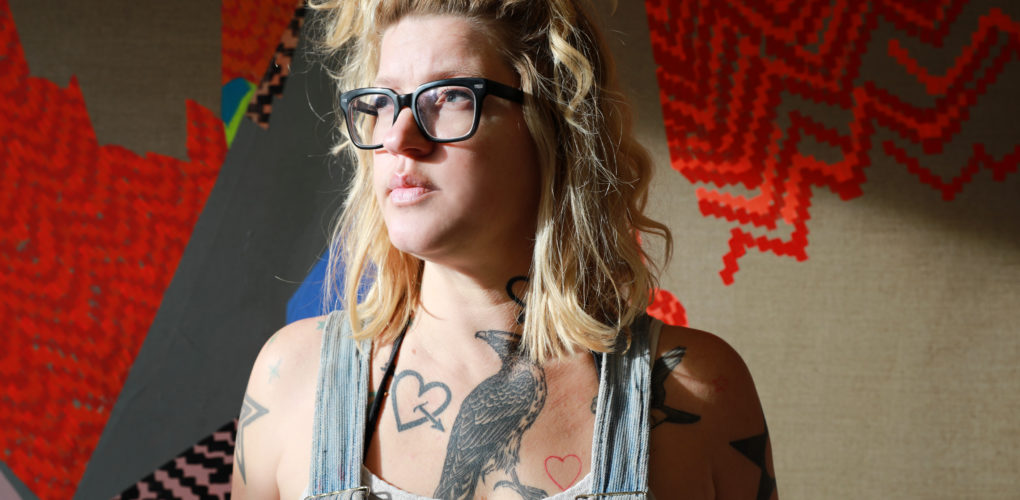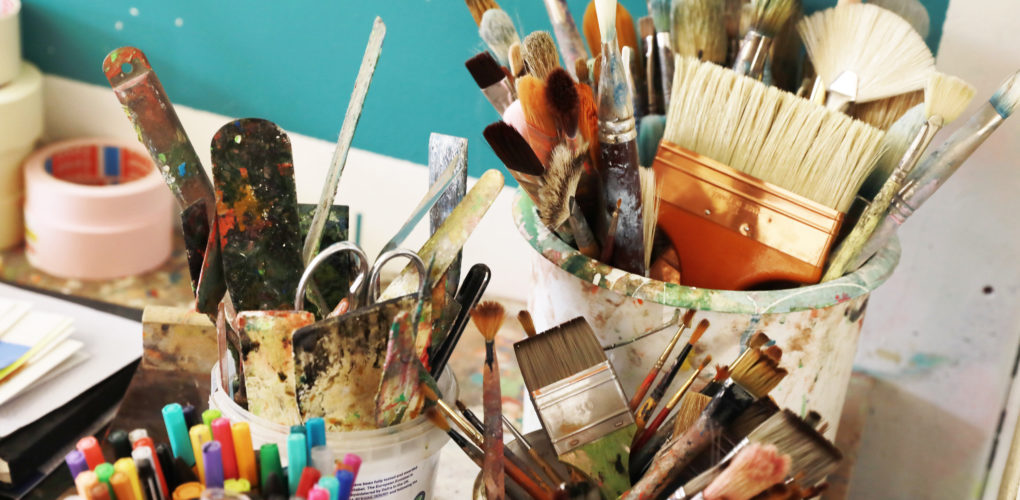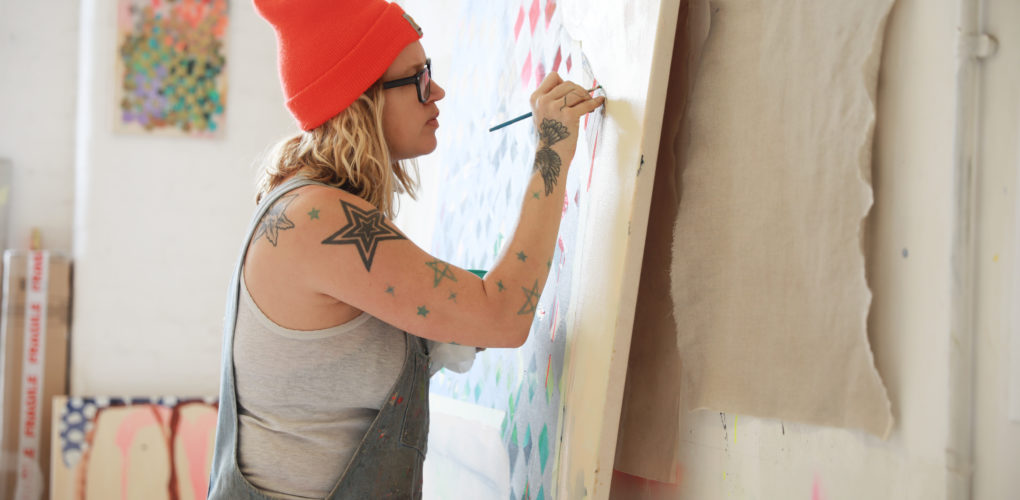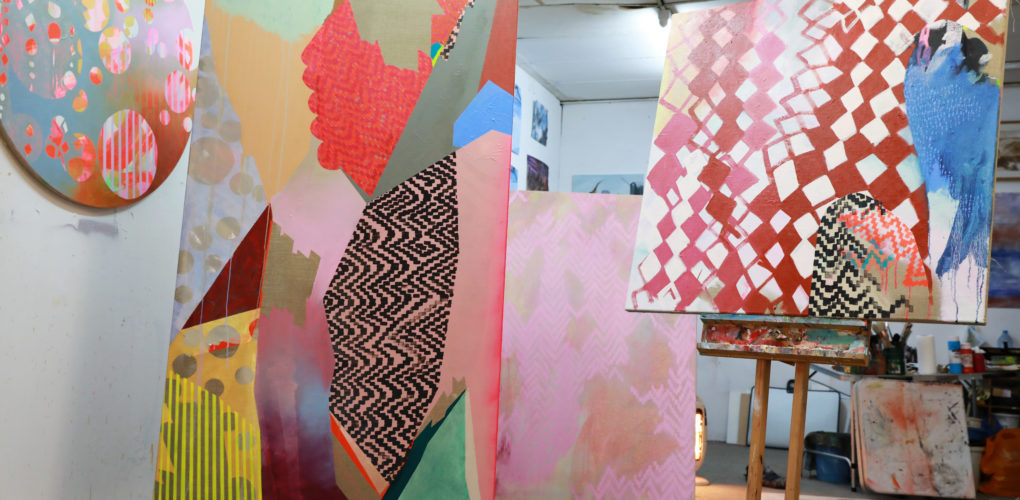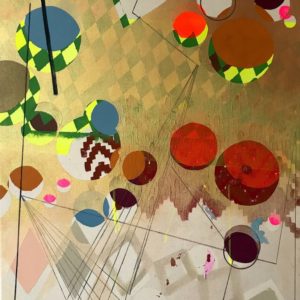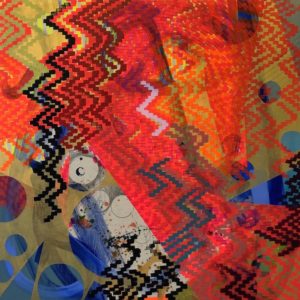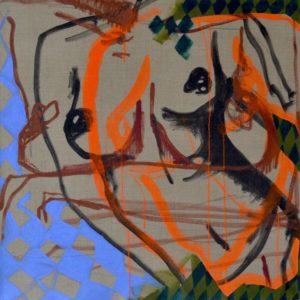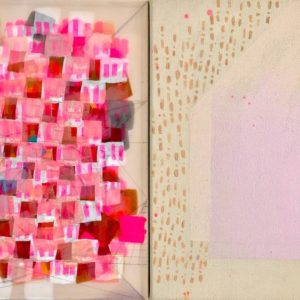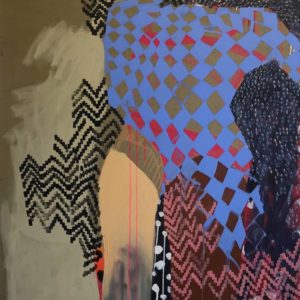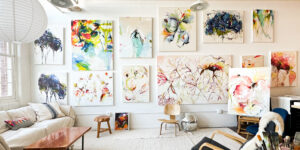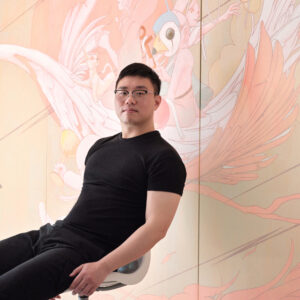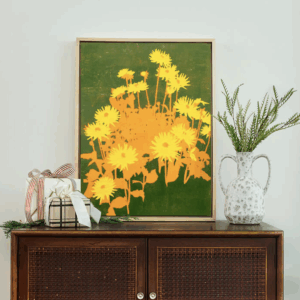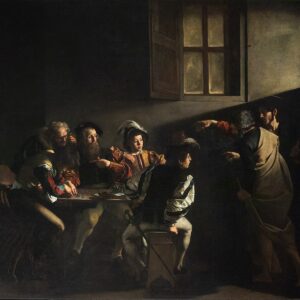Inside the Studio
 Lindsay Mapes: Transforming Memories into Visual Expression
Lindsay Mapes: Transforming Memories into Visual Expression
What are the major themes you pursue in your work?
My work explores themes of erasure, obfuscation, obstruction, and secrecy in multiple series of boldly-coloured paintings and drawings. Colour and pattern play a significant role in my paintings. The relationship between colour and the feelings that certain colours and colour combinations evoke is always at the forefront of my work. Through an extended editing process, I draw upon the concept of the pentimento (from the Italian pentirsi, to repent), which, in painting, refers to an alteration evidenced by traces of the artist’s previous mark-making, revealing the changes made during the painting process. In this way, I examine how a thought process can be realized in paint and the visual language.
How did you first get interested in your medium, and what draws you to it specifically?
While I was in high school I realized very quickly I needed more, more art. I began taking life drawing and painting classes at The Kansas City Art Institute, which then opened my eyes to the love of paint. I started to assist my painting mentor, Eric Swangtu, and it became very clear that this was my journey in life. My father told me that I always said, I wanted to be an artist, but specifically a painter. I believe I had no other choice. In fact, every decision I have made in my life has always been focused around my life as a painter. These have not been easy choices, however they have been very fulfilling. There is something about the medium of paint itself that has kept me questioning and pushing myself. It is an incredibly interesting, difficult, all-consuming, pure, righteous, dull, lonely, joyous, thankful and laughable way of life. This simple love of paint has lead me on.
Has your style and practice changed over the years?
Yes, definitely; however, I do feel there is a common thread that runs through all my work. Each piece or series can help me take a small step towards the next piece. For me, each painting informs the other. I tend to look back a lot at work that I made in the past (either 20 years ago or 2 days ago) and most of the time, I can tell I was trying to reach for something, however I didn’t have quite the confidence in what I was trying to say or do at the time. Some things take time and some things don’t. One thing I have always been most interested in is the process. The process of making and editing.
Can you walk us through your process? Do you begin with a sketch, or do you just jump in? How long do you spend on one work? How do you know when it is finished?
I have a very specific studio practice, where I tend to work in the studio 5 days a week or more. I never have my phone on and I do not bring my computer to the studio. My studio is very much a painting space. It’s dirty floors, paint splattered walls and smells of oil paint wash through the space which creates an environment to be creative. I typically have about 10-15 paintings I am working on at once. As they each have multiple layers, drying time is important and so is patience. I do a lot of drawings, not necessarily with a pencil or pen, I tend to use my Stanley knife most of the time for what I would call drawings or cut-outs. I work on each painting for a while, which can take many years to complete and others 6 months to 1 year. I give the work a lot of space and time to process, resulting in some things getting re-worked even after many years. Painting is about the process for me. I build the stretchers, I soak rabbits skin glue, I stretch my own canvas and linen, I prime all my surfaces, and then I begin to paint. The painting begins at the point of making. The question is, “When is the painting finished?” Jackson Pollock once said in response to this question, “When I’m satisfied.” And I’d have to agree, something gets satisfied, whether it is a visual, emotional or physical response. It is an intuition that only the creator can hold and use wisely.
If you couldn’t be an artist, what would you do?
An undercover detective or CSI. I have always been fascinated in crime shows. I’d like to think I have a great eye for detail.
Who are some of your favorite artists, and why?
I grew up studying and understanding form and color by looking at Georgia O’Keefe’s paintings and drawings. I looked up to her as a female artist in the Southwestern region of The States, as I myself was born in Arizona. Joan Mitchell, especially her series called, ‘My black paintings’. Henri Matisse and Frida Kahlo’s love of color, shape, line and form are extremely informative in both of their unique ways of storytelling in the visual language. ‘The Deposition from the Cross’ by Jacopo Pontormo is my all time favorite painting. It lives in a small church called Santa Felicita in Florence, Italy. For a painting made in the 16th century, the bold, fluid and brightness of the colors used alongside the emotions depicted in this painting are always at the forefront of my mind. Other contemporary artists I enjoy are Rebecca Morris, Phoebe Unwin, Jonas Wood, Kara Walker, Nika Neelova and Willie Binnie.
